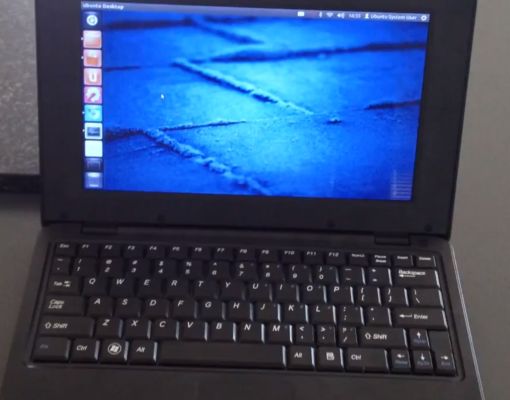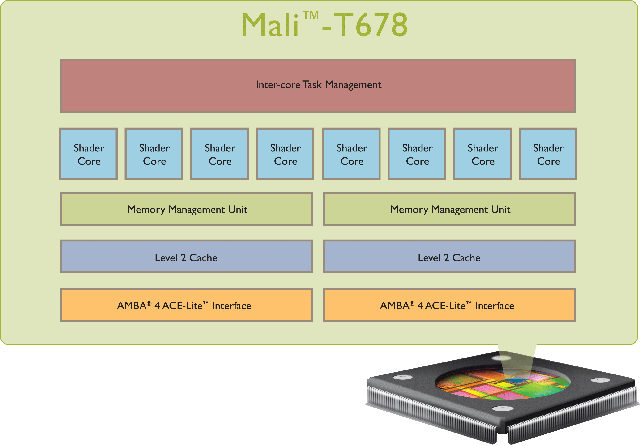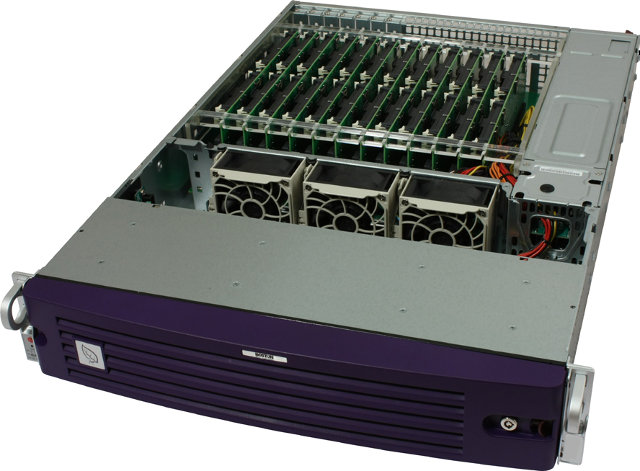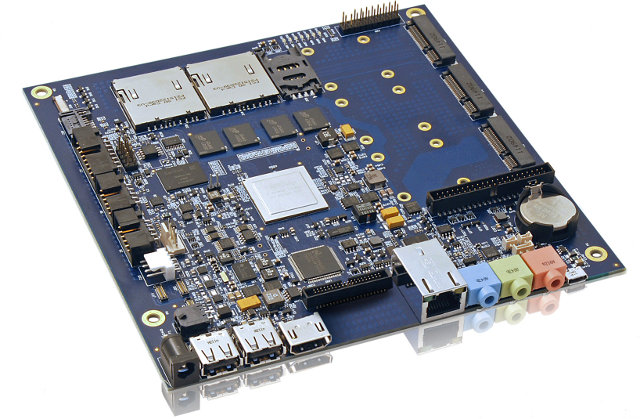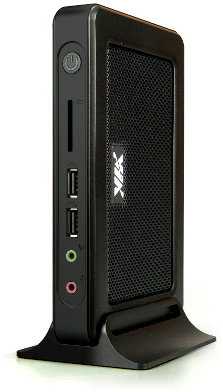Rikomagic, the company that sells the MK802 mini PC, is planning to sell a netbook based on AllWinner A10 processor that runs both Android and Ubuntu operating systems. This device looks very much like the H6 netbook with a 10″ 1024×600 display, 1 GB RAM, 4 to 8 GB flash. an SD card slot, 3 USD ports, audio in/out and a front camera. Android currently runs in the internal flash, and Ubuntu can be booted from an SD card. In the video below, Andy Kirby of Rikomagic gives an overview of the netbook and shows a demo of Ubuntu Desktop running from an SD card. The Linux OS seems to run relatively smoothly as he shows pages rendered in Chromium.However, hardware acceleration (both OpenGL and VE) is missing, and Youtube video playback is very slow as it is rendering in software. Open Office is also a bit slow, but it’s […]
15 Linaro OnAir Sessions about Android, Linux, Debugging and Software QA
Linaro has planned 15 virtual conferences between Monday, August 13 and Saturday, August 18, 2012. Those online events will deal with the work done at Linaro, including software optimization, software QA, Android and Linux kernel development, Open Embedded on ARMv8 and more. Those conferences are public and anybody can join. All times indicated below are GMT+07:00 (Bangkok), so you can either mentally convert the time (recommended), or click on the links below to get the date and time in your timezone. Exploring The Performance Impact of PGO and LTO on ARM– Mon, August 13, 5:00 PM Abstract: Profile guided and linked time optimisation (PGO and LTO) are two of GCC’s cross program optimisations that should improve both the startup and runtime of typical programs. We know that they basically work on ARM but don’t know the potential speed up or the work involved in proper support. This session will cover […]
ARM Announces 3 New Midgard GPUs – Mali-T624, Mali-T628 and Mali-T678
ARM announced the second generation of the Mali-T600 Series GPUs targeting tablets, smartphones and smart TVs. Those new GPUs provide up to 50% performance increase over the first generation Midgard GPUs (T-604 & T-658) and include support for Adaptive Scalable Texture Compression (ASTC), a texture compression technique. The company explains that ASTC significantly optimizes GPU performance and increases battery life in devices. Those 3 new GPUs based on Mali Midgard architecture are named as follows: Mali-T624 – 1 to 4 cores – Market: Smartphones and smart-Tvs Mali-T628 – 5 to 8 cores – Market: Smartphones and smart-Tvs Mali-T678 – Up to 8 cores, 4x the GPU compute performance of Mali-T628 – Market: Tablets As with previous Midgard GPUs, the new GPUs support GPU compute with improves performance and energy-efficiency for math intensive activities, such as: Computational photography – computational methods of enhancing or extending digital photography Multi perspective views – […]
LinuxCon North America 2012 Schedule
LinuxCon (North America) 2012 will take place on August 29 – 31, 2012 at Sheraton Hotel & Marina, in San Diego, California. The event will be co-located with the Linux Kernel Summit, the Linux Plumbers Conference, and CloudOpen 2012. LinuxCon consists of 3 days of keynotes, business and developers related sessions as well as tutorials. There will be over 80 sessions and keynotes during those 3 days. I’ll highlight a few sessions that I find particularly interesting and related to embedded Linux, software development and ARM. August 29 10:45 – 11:30 – Life After BerkeleyDB: OpenLDAP’s Memory-Mapped Database by Howard Chu, Symas Abstract: OpenLDAP’s new MDB library is a highly optimized B+tree implementation that is orders of magnitude faster and more efficient than everything else in the software world. Reads scale perfectly linearly across arbitrarily many CPUs with no bottlenecks, and data is returned with zero memcpy’s. Writes are on […]
ELLCC Multi-Target Cross Compiler Based on Clang and LLVM Compiler Infrastructure
ELLCC is a project aiming at creating a multi-target cross compilation environment for embedded systems. which makes use of Clang and the LLVM compiler infrastructure. QEMU is used for cross-platform testing. The project goals are to implement the following key features: A functional C/C++ compiler based on Clang (ecc) Multi-target support: ARM, i386, Microblaze, Mips, Nios2, PowerPC, PowerPC64, Sparc and X86_64 Multi-OS support: Linux, Standalone, … A complete test environment that allows automatic unit and integration testing of the run-time environment and complete executables. Support of a wide variety of target processors from armv4 to armv7, several mips cores, i386, and more. The project is still being developed, and ELLCC is in a pre-release state. ELLCC is composed of the following components: ecc – The ELLCC C/C++ compiler, a single executable with gcc compatible options. binutils – The GNU binutils package. libecc – The C standard library based on the musl standard […]
Boston Ships Viridis ARM Server Based on Calxeda EnergyCore Cortex A9 SoC
At the end of 2011, Boston, a British IT company, announced plans for an ARM server based on Calxeda Quad Core Cortex A9 Server-on-Chip, and now the company recently announced they started to ship the server (called Viridis) to their first customers. We now have further details about the server including the key features: Ten times the performance at the same power in the same space Cut energy and space by 90% Easily scalable to thousands of nodes 48 SoC devices delivered across 12 Calxeda EnergyCard modules Each EnergyCore SoC contains an ARM quadcore processing unit, providing a total of 192 cores per 2U enclosure Low power consumption: <300W with each SoC consuming between 0.5 to 5W depending on the load. Up to 24 SATA HDDs or SSD devices Up to 192GB of RAM per 2U enclosure A Calxeda EnergyCard (pictured below) features 4 Calxeda EnergyCore ECX-1000 SoC which can […]
Kontron Unveils KTT30/mITX Nvidia Tegra 3 Mini-ITX Board
Kontron has today unveiled the KTT30/mITX, its first embedded ARM based Mini-ITX board (and the first ARM mini-ITX board I’ve ever heard of). The motherboard is powered by Nvidia Tegra 3 quad core processor @ 900 MHz with up to 2 GB DDR3L memory, and consumes less than 7W. Storage is available via 2 SD Card slots, one bootable eMMC, and one SATA 2.0 port. The company expects this ARM Mini-ITX motherboard to be used in applications such as thin clients, Panel PCs, digital signage and Mini-Box PCs. The solution is also suitable for industrial (rail road, instrumentation…) and medical fields as it will be available for at least seven years. By using the Mini-ITX form factor, Kontron KTT30/mITX board can be easily integrated in existing embedded solutions using (x86) mini-ITX boards. Here are the key features of Kontron KTT30/mITX motherboard: SoC – Nvidia Tegra 3 ARM Cortex-A9 Quad Core […]
VIA Announces ARM Cortex A9 Based Digital Signage System
VIA has unveiled its ARM Digital Signage (DS) system for cost sensitive high volume digital signage deployments. The system is based on an unnamed Cortex A9 processor (possibly Wondermedia WM8850?) with up to 2 GB RAM and 64 GB Flash. The company expects the device to be used in a wide range of applications such as kiosks, POS systems, video walls, menu boards to TVOIP, cloud streaming, and Out of Home Advertising. Here are the specs of this digital signage player: All in one system-ready to load software Designed for Android operating system Industry standard ARM Cortex A9 SoC Hardware acceleration of the most demanding video formats for resolutions up to 1080p DVI-D display port (HDMI Optional) 4x USB 2.0 ports 10/100 Ethernet port Audio-out/ Mic-in Up to 64GB NAND Flash Up to 2GB DDR3 SDRAM Dimension – 18 cm x 12 cm x 2.5 cm The VIA ARM DS […]


